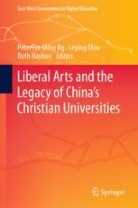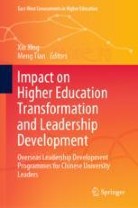
About this book series
This book series focuses on higher education crosscurrents between Asia and the West, including traditional comprehensive universities, normal universities for teachers, higher vocational institutions, community colleges, distance and on-line universities and all the differing approaches to higher education emerging under processes of massification and diversification. It gives attention to the ways in which the Asian context shapes the internationalization of higher education and the response to globalization differently from that of the West, as well as new phenomena that are arising in the interface between these two broad regions, such as higher education hubs and regional networks of collaboration. Lastly, it will highlight the growing reciprocity between these two regions, whose higher education systems have grown from such deeply different historical roots.
Higher Education has deep roots in the cultures and civilizations of diverse regions of the world, but perhaps the most influential models shaping contemporary globalization come from Europe and China. Universities established in Europe in the Middle Ages have developed into what is now described as the “global research university,” a model profoundly shaped by 19th century Germany and 20th century America, and spread around the world both through colonization and the emulation of its scientific achievements and contribution to nation building. A millennium earlier China spawned another influential model, characterized by close integration within a meritocratic bureaucracy that entrusted governance to those who could demonstrate their knowledge through written examinations. The Chinese model was greatly admired in Europe from the time it was introduced in the 16th century, and one can see its contours in what Burton Clark described as the “continental model” in contradistinction to the “Anglo-American model” epitomized in the global research university.
What has become clear in the maelstrom of globalization, which has stimulated the growth of a global knowledge economy and created circumstances where nations consider higher education as crucial to remaining competitive, is that the integration of core features from both models would be optimal: from Asia, a tradition of strong state support for and involvement in higher education, which is crucial for good governance and social advancement; and from Europe and North America, the ideas of university autonomy and academic freedom, which are essential to promoting scientific creativity and innovation.
Higher Education has deep roots in the cultures and civilizations of diverse regions of the world, but perhaps the most influential models shaping contemporary globalization come from Europe and China. Universities established in Europe in the Middle Ages have developed into what is now described as the “global research university,” a model profoundly shaped by 19th century Germany and 20th century America, and spread around the world both through colonization and the emulation of its scientific achievements and contribution to nation building. A millennium earlier China spawned another influential model, characterized by close integration within a meritocratic bureaucracy that entrusted governance to those who could demonstrate their knowledge through written examinations. The Chinese model was greatly admired in Europe from the time it was introduced in the 16th century, and one can see its contours in what Burton Clark described as the “continental model” in contradistinction to the “Anglo-American model” epitomized in the global research university.
What has become clear in the maelstrom of globalization, which has stimulated the growth of a global knowledge economy and created circumstances where nations consider higher education as crucial to remaining competitive, is that the integration of core features from both models would be optimal: from Asia, a tradition of strong state support for and involvement in higher education, which is crucial for good governance and social advancement; and from Europe and North America, the ideas of university autonomy and academic freedom, which are essential to promoting scientific creativity and innovation.
- Electronic ISSN
- 2364-6829
- Print ISSN
- 2364-6810
- Series Editor
-
- Ruth Hayhoe
Book titles in this series
-

-
Application-Oriented Higher Education
A Comparative Study between Germany and China
- Authors:
-
- Ye Zhang
- Xinrong Chen
- Copyright: 2022
Available Renditions
- Hard cover
- Soft cover
- eBook

-
Liberal Arts and the Legacy of China’s Christian Universities
- Editors:
-
- Peter Tze Ming Ng
- Leping Mou
- Ruth Hayhoe
- Copyright: 2023
Available Renditions
- Hard cover
- eBook

-
Impact on Higher Education Transformation and Leadership Development
Overseas Leadership Development Programmes for Chinese University Leaders
- Editors:
-
- Xin Xing
- Meng Tian
- Copyright: 2022
Available Renditions
- Hard cover
- Soft cover
- eBook

-
Internationalizing the Social Sciences in China
The Disciplinary Development of Sociology at Tsinghua University
- Authors:
-
- Meng Xie
- Copyright: 2022
Available Renditions
- Hard cover
- Soft cover
- eBook

